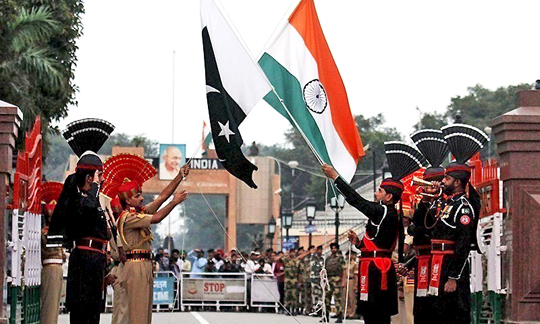Beijing, May 25: The $50 billion China-Pakistan Economic Corridor (CPEC) traversing through PoK might create "geo-political tension" in the region by igniting further tensions between India and Pakistan, a UN report has warned.

The report released by the UN's Economic and Social Commission for Asia and the Pacific (ESCAP) said that the project could also fuel separatist movement in Pakistan's Balochistan province.
"The dispute over Kashmir is also of concern, since the crossing of the CPEC in the region might create geo-political tension with India and ignite further political instability," said the report on China's ambitious Belt and Road Initiative (BRI).
The report, prepared at the request of China, also cautioned that the instability in Afghanistan could cast a shadow over viability of the CPEC over which India has already raised protests with China and boycotted the last week's BRI summit in Beijing.
"Afghanistan's political instability could also limit the potential benefits of transit corridors to population centres near Kabul or Kandahar, as those routes traverse southern and eastern Afghanistan where the Taliban are most active," the report said.
The report also covered other economic corridors of the BRI including the Bangladesh-China-India-Myanmar Economic Corridor (BCIM).
According to the report, while the CPEC could serve as the "driver for trade and economic integration" between China, Pakistan, Iran, India, Afghanistan and the Central Asian states, it could also cause many problems within Pakistan and reignite separatist movement in the country due to opposition in Balochistan.
"However, social and environmental safeguards are a concern. The CPEC could lead to widespread displacement of local communities. In Balochistan, there are concerns that migrants from other regions of Pakistan will render ethnic Baloch a minority in the province," it said.
Further, concerns exist that the CPEC will pass from the already narrow strip of cultivable land in the mountainous western Pakistan, destroying farmland and orchards.
The resulting resettlements would reduce local population into an "economically subservient minority", it said.
"In addition, Hazaras are another minority of concern. If the benefits of the proposed CPEC are reaped by large conglomerates, linked to Chinese or purely Punjabi interests, the identity and culture of the local population could be further marginalised," the report cautioned.
"Marginalisation of local population groups could reignite separatist movements and toughen military response from the government," it said.
About the BRI, it said, the scale of the BRI both in terms of geographical coverage and its cross-sectorial policy influence will shape the future of global development and governance.
"It brings wide-reaching implications for China, for the countries it links across the Asia-Pacific and for the global economy," it said.
"In order for the full potential of the BRI to be realised there are several prerequisites. It should be founded on principles such as trust, confidence and sharing benefits among participating states."
It should play a positive role in the response to climate change over the coming decades, promoting low carbon development and climate resilient infrastructure, the report said.
"Lastly, to be effective and deliver results in a timely fashion, it should go beyond bilateral project transactions to promote regional and multilateral policy frameworks," it said.
"The BRI will serve the interests of China and the countries along its corridors more effectively if it is shaped as a collective endeavour and is well integrated into existing regional cooperation initiatives," it said.
To this end, the BRI needs to co-opt and engage Asian sub regional platforms to ensure that it reinforces regional plans of connectivity and prioritises the missing transport links along corridors, particularly those in the China-Central-West Asia and the China-Indo-China-Peninsula corridors, it said.
Shamshad Akhtar, former governor of State Bank of Pakistan, who heads the ESCAP wrote the foreword for the report.
In her foreword Akhtar said, "our analysis confirms the benefits the BRI could bring are significant. The BRI could help raise economic output levels by an average of 6 per cent in participating countries. If these countries lowered border transaction costs and import tariffs, the difference the BRI could make would be greater still."





Comments
Add new comment